Few design elements are versatile enough to offer cottage appeal or elegance depending on their placement. Beadboard, a style of decorative wall paneling (wainscoting), is just that versatile. Beadboard originated in England four centuries ago with the practical purpose of keeping heat inside the house and moisture from outside at bay. It is said that early English settlers brought the design to the U.S. to remind them of the history and architectural character of the homes they left behind. Today, beadboard is still often associated with coastal New England homes, but is admired and emulated across the country.
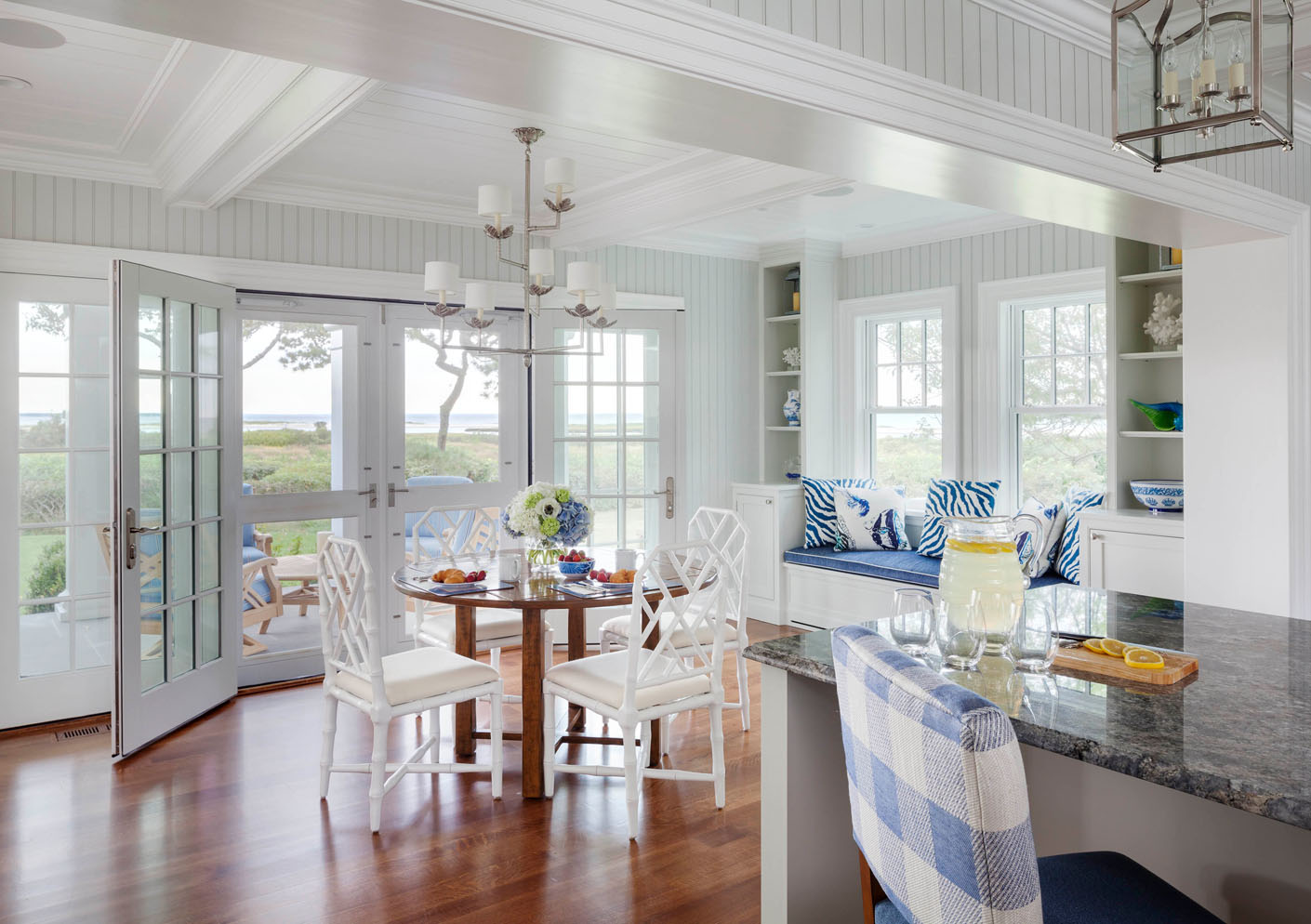
Beadboard was originally made of evenly spaced wooden tongue and groove planks that interlocked with ridges or “beads” between each one. In this style of wainscoting, the panels were lined up vertically on an interior wall and typically covered the lower 3 to 4 feet, the same height as most chair backs (hence nicknamed a chair rail). Over time, beadboard evolved into a decorative treatment used throughout the home. In the 1800s, kitchen cupboards often used beadboard as a backdrop for porcelain dinnerware or keepsakes displayed inside.
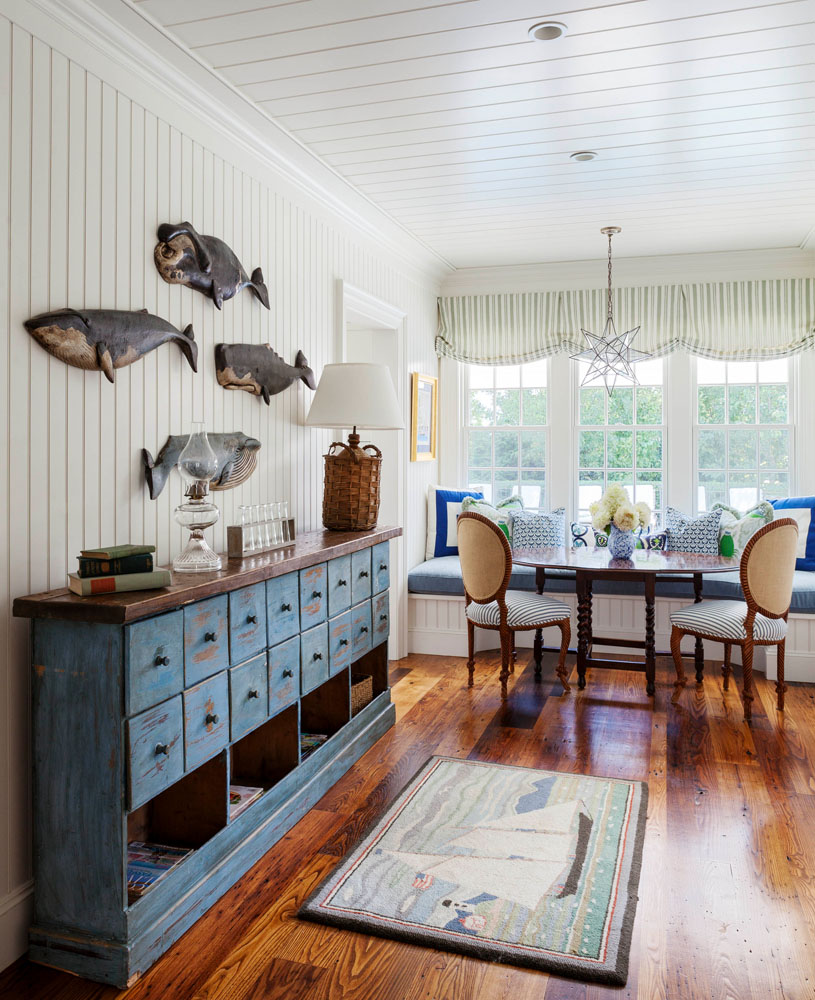
Today, beadboard is available in varying profiles and panel widths and can be purchased in large, carefully milled sheets. Because humidity can cause boards to shift and paint to crack, we prefer beadboard made of medium-density fiberboard (MDF), which comes in ready-to-paint sheets, generally 4 feet high by 8 feet wide. MDF takes paint very well, does not expand or contract, and is as rugged as oak.

We introduce beadboard as a design feature to add to the character and theme of a house. The way in which we use it, however, varies depending on the overall height of the space and the tone and texture of each room. For example, if we want to reinforce a cottage or seaside vernacular, we may choose to create a room with beadboard on both the walls and the ceilings, with planes subtly defined by 6” wideplanks on the ceilings and 3” wide planks on the walls.
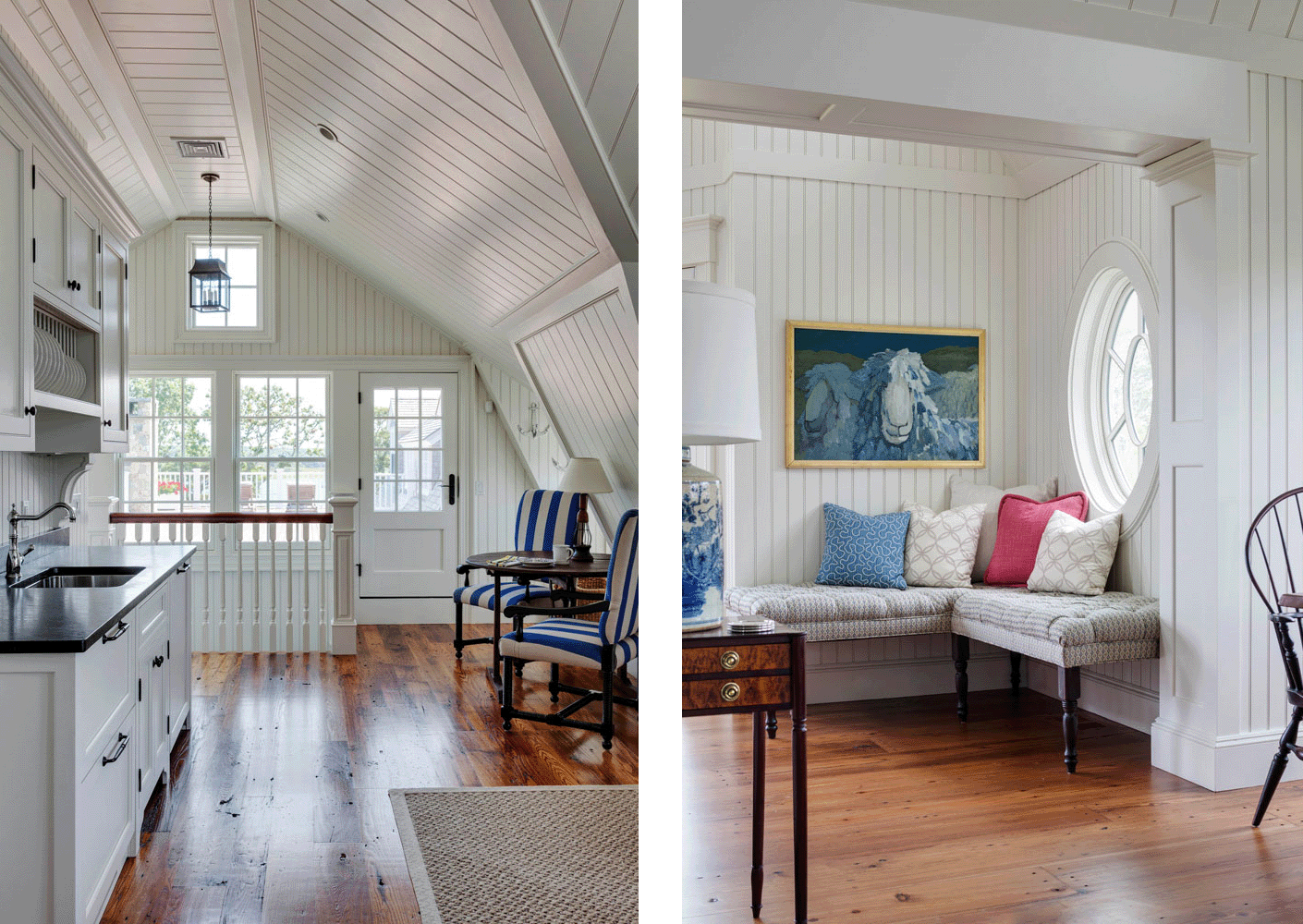
In private spaces, like the primary bedroom suite, we often include beadboard as a classic, warm accent, covering just half or three-quarters of the wall. We may also consider introducing it as a ceiling accent, either alone or with cased or antique beams.
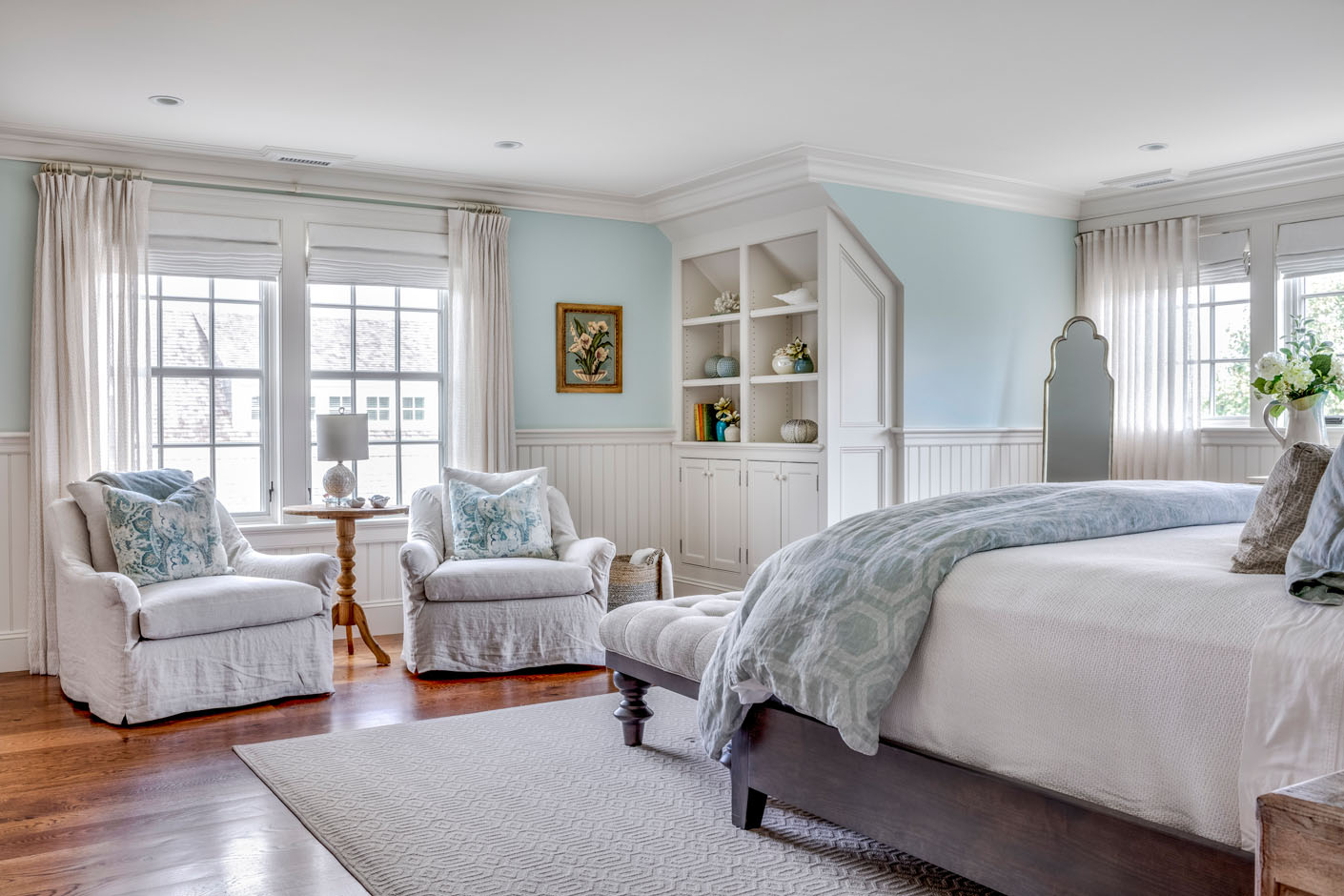
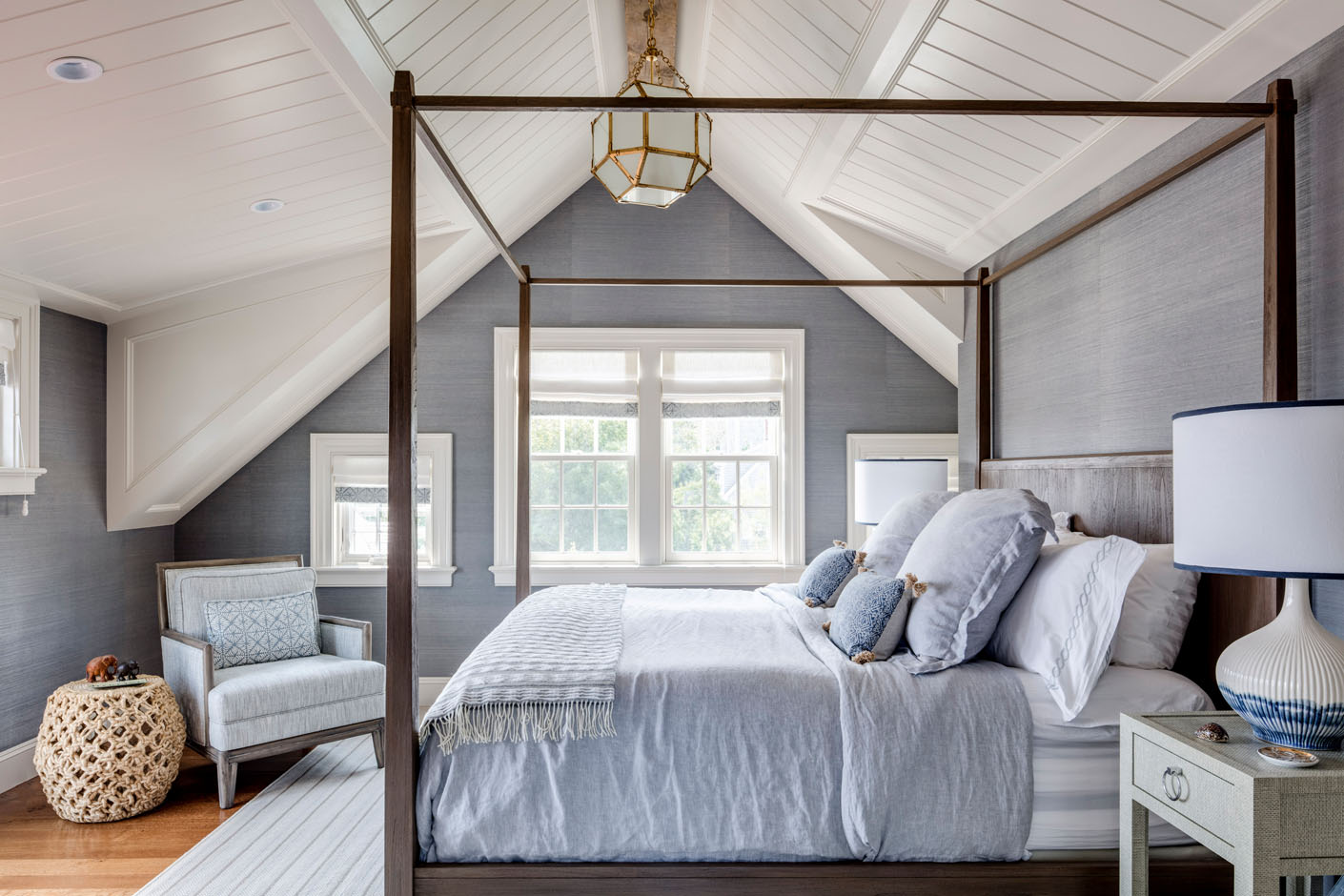
The versatility of beadboard is undoubtable. It can be used in lieu of plaster or sheetrock, installed at any height, and painted or stained any color. Our most typical specification is to paint beadboard Ahearn White using Benjamin Moore Advance with a Satin Interior Finish.
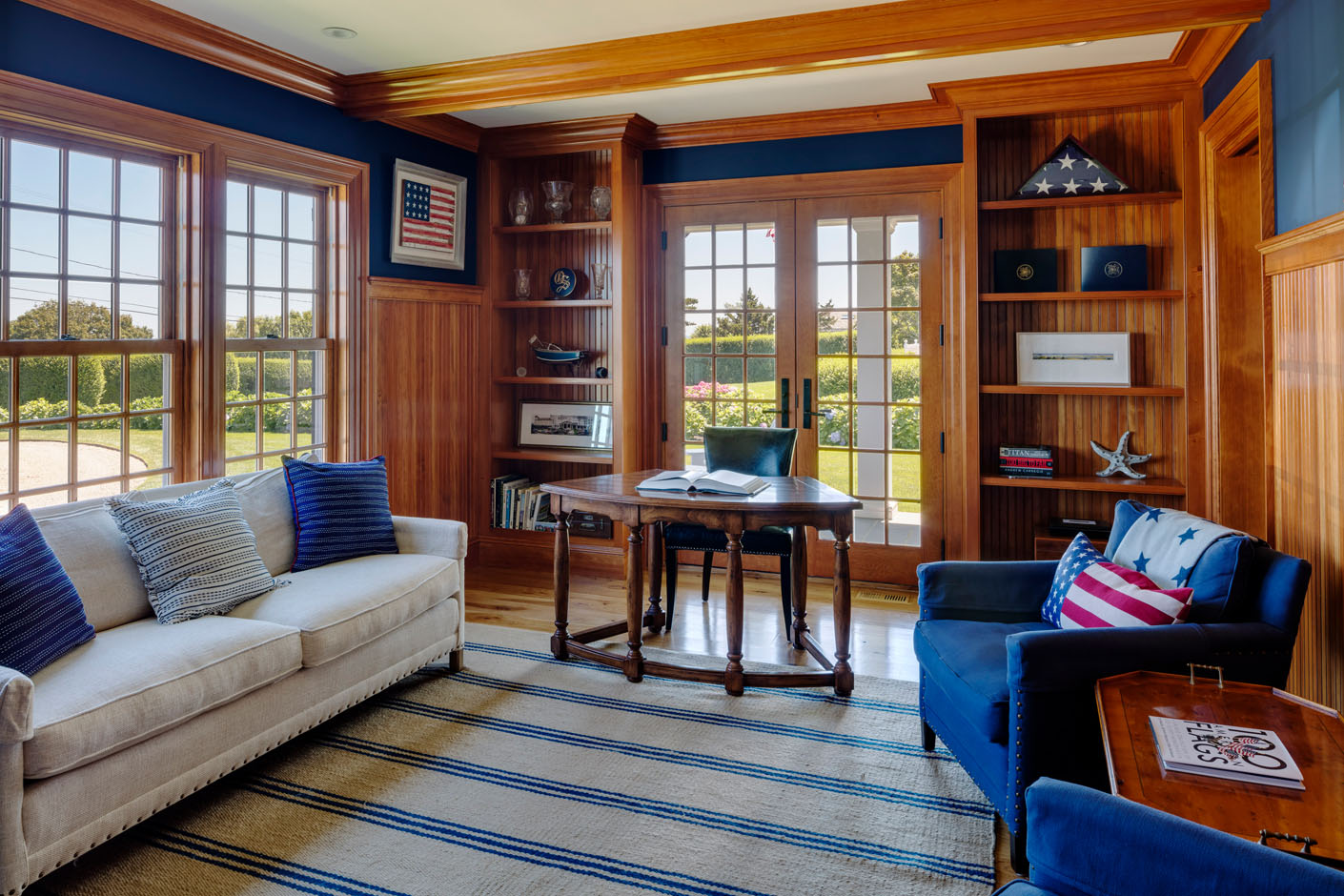
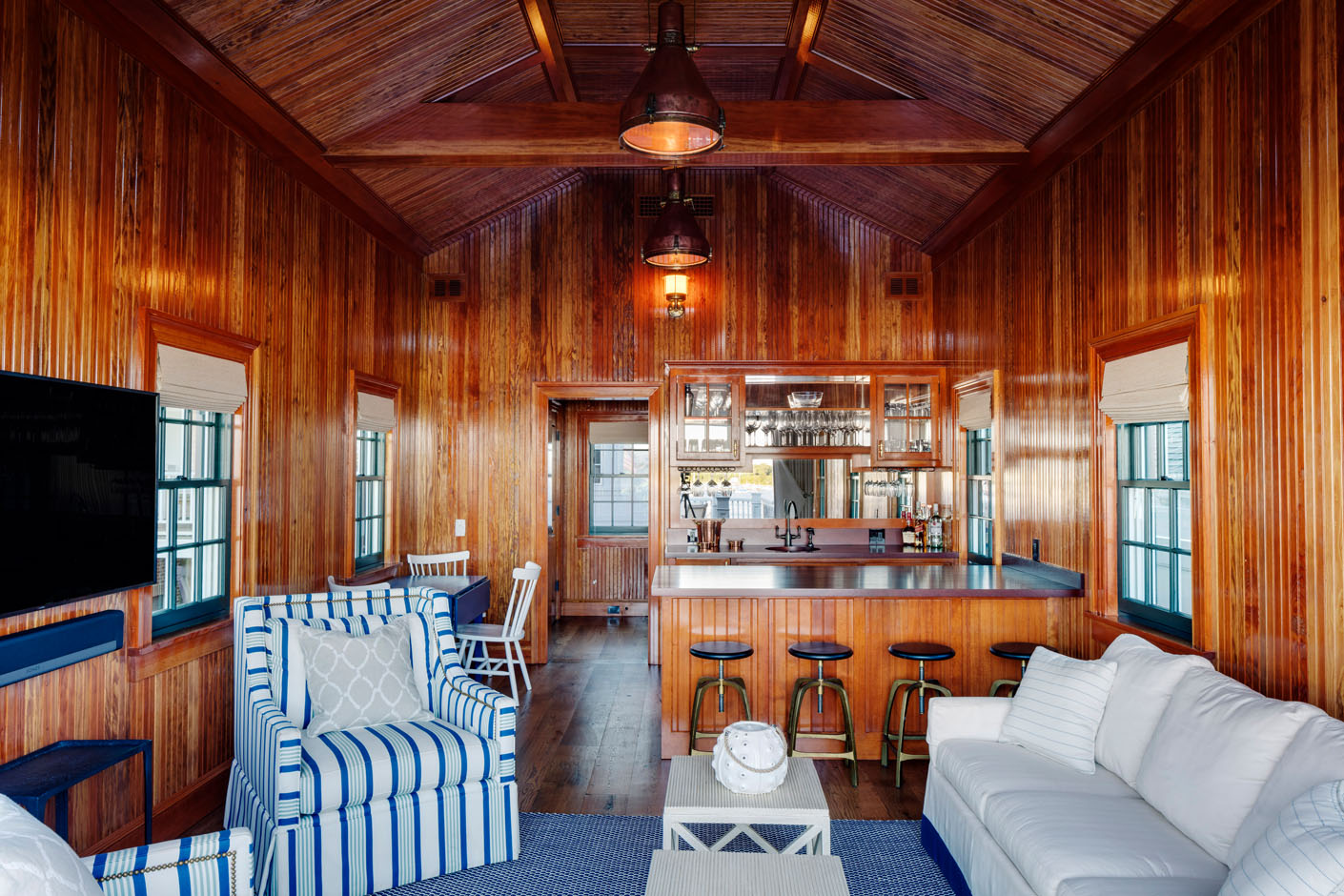
Beadboard is a classic architectural wall treatment with rich history that will forever be associated with New England vernacular. If this discussion of beadboard has you rethinking your walls, contact us to learn how we might approach the project. In the interim, we invite you to find inspiration in our portfolio.
Originally posted May 16, 2019.
Revised February 2, 2023.